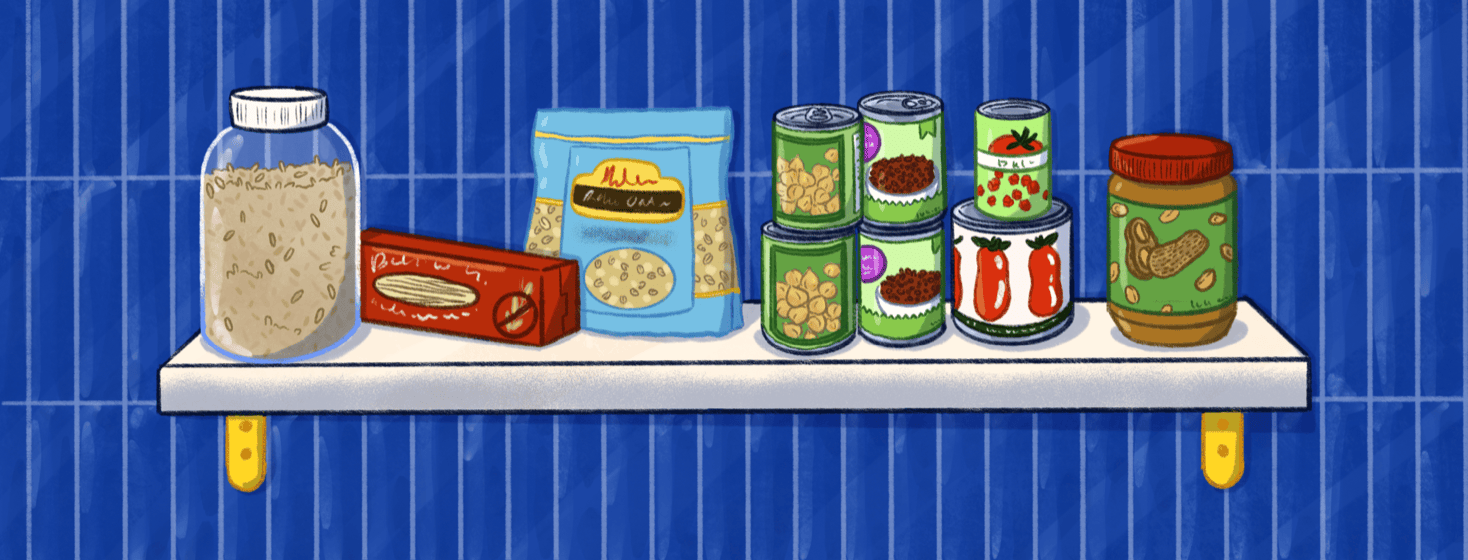Pantry Essentials for the Low FODMAP Diet
If you are living with IBS, the low FODMAP diet is one of several tools you can use to manage your symptoms. By temporarily restricting certain carbohydrates, this diet gives your digestive system a break and may help your symptoms improve.1
But following the low FODMAP diet can be tricky, especially if you are not organized. Here I share 6 of my favorite pantry essentials for the low FODMAP diet. As a registered dietitian, I've found that these basics can be used to whip up quick and easy IBS-friendly meals.
6 low FODMAP pantry staples
1. Rice
Many grains fall onto the elimination list when following the low FODMAP diet. Luckily, different varieties of white and brown rice are low FODMAP.2
Brown rice is a whole grain, meaning the rice husk, bran, and germ remain intact. Luckily, white rice is typically fortified with the nutrients stripped out of brown rice during milling, especially B vitamins. (The fiber is not replaced, so if you want to increase your fiber intake, brown rice is a better option.)3
It is worth noting that wild rice has not been tested for FODMAPs by Monash University. If your symptoms are well-managed, try a small portion to see how you respond.4
2. Wheat-free pasta
Since wheat is high in the FODMAP fructans, opt for wheat-free pasta. Typically, gluten-free pasta is low in FODMAP, but it is important to watch out for the following high FODMAP ingredients:2,5
- Honey
- Molasses
- Chicory root
- Inulin
- Flours like rye or barley
Try combining wheat-free pasta with onion-free/garlic-free marinara sauce and pre-cooked chicken for a quick weeknight meal.
3. Oats
Stuck on what to eat for breakfast? Oats are a great FODMAP-free breakfast option that is packed with fiber. Try classic hot oatmeal cooked with lactose-free or low FODMAP plant-based milk, or overnight oats for an even faster grab-and-go option.2,5
If you are struggling with constipation, oats can help get things moving. If you are struggling with diarrhea, oats can help absorb water in the bowels and firm up stools. In other words, no matter what kind of IBS symptoms you’re having, oats can be a great low FODMAP breakfast option.6
4. Canned chickpeas and lentils
While dried chickpeas and lentils are high in FODMAPs, the canning process helps reduce the FODMAP content of these pulses. Since they are stored in water, the FODMAPs are leached out – so be sure to rinse them before eating to avoid eating the FODMAPs that have leached into the water.5,7
The best thing about canned chickpeas and lentils? They take minimal preparation time since they have already been soaked and softened during processing. Try adding them to wheat-free pasta, rice, or salad. Limit the serving size to 1/4 cup per meal to ensure it remains low FODMAP.
5. Canned tomatoes
Canned tomatoes can form the base of many different meals, and they are low FODMAP up to half a cup. Try adding them to pasta, chili, or a hearty tomato soup.2,5
Be sure to check the label before buying. Many canned tomatoes have additional ingredients like garlic or onions, so choose a variety that doesn’t include these high FODMAP ingredients.
6. Peanut Butter
If you like peanut butter, you're in luck! Peanut butter is low FODMAP at a serving size of 2 tablespoons. Peanut butter contains important nutrients, including protein, healthy fats, vitamin E, B vitamins, magnesium, copper, and manganese.8
Peanut butter is a versatile protein source that quickly becomes a satisfying meal. Stuck for lunch ideas? A classic peanut butter sandwich on low FODMAP bread is a tasty option. Or, add a spoonful to your smoothie for a nutrient boost!
Final Thoughts
With a little planning, you can ensure your pantry is filled with low FODMAP staples so that meal prepping is faster and less stressful.
What is in your pantry? Let us know in the forums or the comments below!

Join the conversation